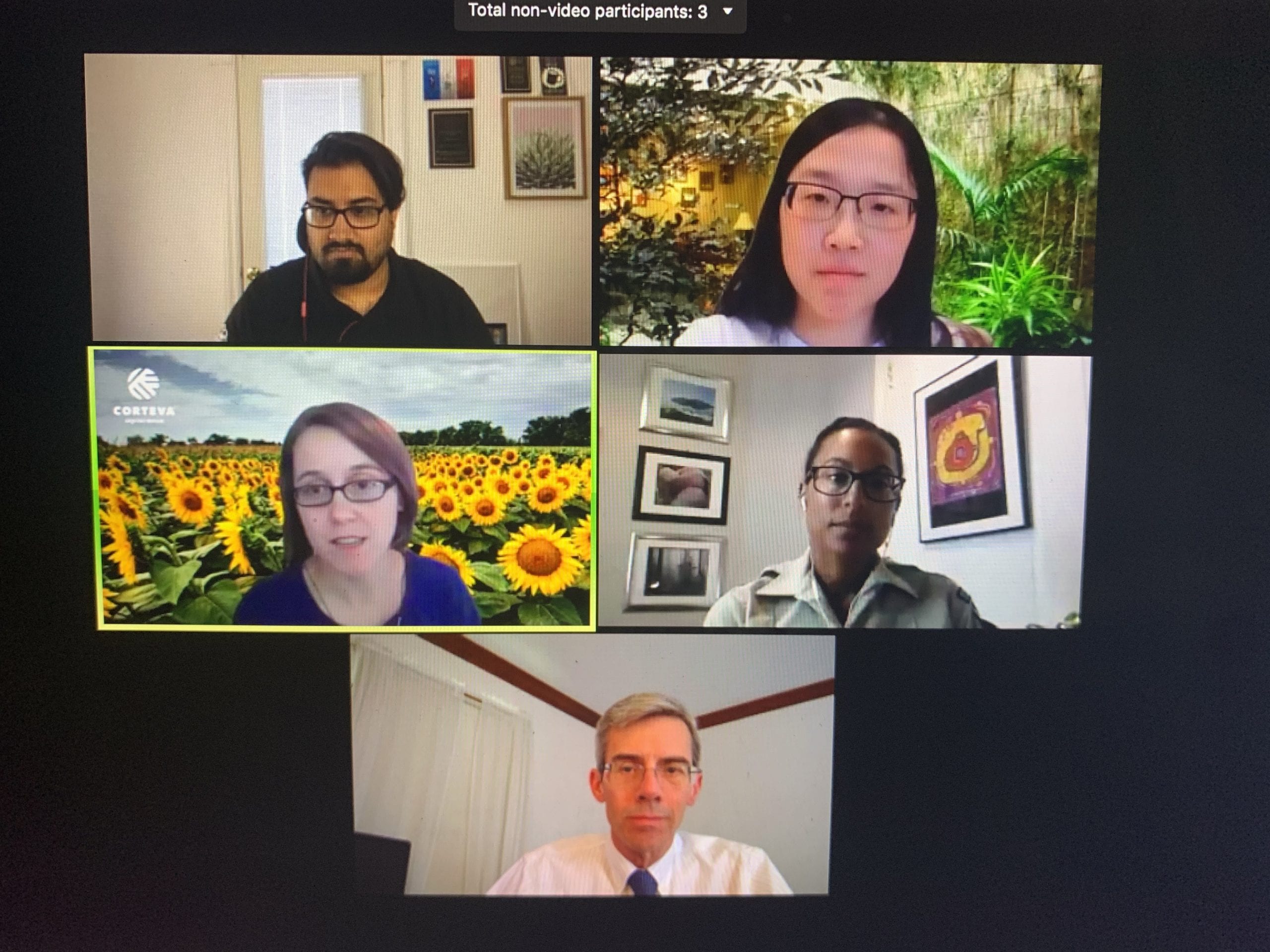News
Summer Intern Blog Weeks 5 & 6: Digging Beneath the Surface

Things are not always what they seem: If you look closely you can see BTI summer intern Emily Humphreys sitting on a rock.
By the fourth week of BTI’s Professional Development Series, I was beginning to fall into a bit of a routine. Every Wednesday, I made myself a cup of tea, grabbed a blanket, and settled down to watch one of BTI’s scientists present their research. Over the weeks, I had learned about things from plant organ size, to tomato grafting, to botanical pathways for chemical synthesis. Even after all this, on a rainy Wednesday in mid-July, I found myself surprised to open my laptop to a presentation called, “Three cool facts you must know about seed-free plants.”
Thinking for a second, I realized that I knew zero cool facts about seed-free plants. In fact, I wasn’t even completely sure to what the term seed-free plants referred. I was excited; I’d be learning about something new!
Over the next hour, BTI’s Dr. Fay-Wei Li took us through his journey studying these plants. I learned that the term seed-free describes many groups that diverged early on from the plants we often think of like flowering plants and conifers. Because of this distinct history, they have many unique traits.
Ferns are one of these seed-free plants. During graduate school, Dr. Li helped to discover a new fern genus, which the team named “Gaga” as both an homage to Lady Gaga and due to a section of shared DNA with G-A-G-A base pairs that’s unique to this group. I was surprised that I had heard of this fern before. Every year, my research mentor at Oberlin College talks about the Gaga fern as an example of ways to get the public excited about plant science. After hearing about Gaga year after year, listening to Dr. Li talk felt like meeting a celebrity.
Dr. Li has also studied another group of seed-free plants called hornworts. These strange plants are bizarre in more ways than one. They look like what might be left if you took a great glob of blue-green paint and smooshed your thumb into it. Just like some of the ferns Dr. Li studied, many hornworts have symbiotic relationships with communities of bacteria. Right now, Dr. Li is working to better understand which bacteria form relationships with hornworts, as well as the conditions underlying these relationships.
After Dr. Li’s talk, I reflected a lot on how I conceptualize plants. When I imagine a plant, I imagine deep roots, straight shoots, large, distinct leaves, and a flower growing towards the sky. The truth is that plants are incredibly diverse in shape, size, and form. They encompass everything from towering trees, to slimy algae, to parasitic plants with no ability to photosynthesize, to hornworts and ferns: the distant cousins of the flowering plants of my imagination.
That same week, a different program also challenged my preconceived notions. The Careers Beyond Academia Panel highlighted how paths that start at a similar place can diverge wildly as researchers grow their careers and follow their interests. During the panel, we heard from a group of professionals with careers spanning everything from patent law, to industry, to government, to starting a business. Even though all the speakers are doing such different work, each of them explained how they draw on the expertise they gained studying plant science in graduate school.

Career Beyond Academia Panel (left to right) Dr. Rishi Masalia (Leaf Works, LLC), Dr. Shiqi Zhang (BTI, moderator), Dr. Laura Wayne (Corteva), Dr. Madeline Grant-Hoffman (Bureau of Land Management’s National Landscape Conservation System), Dr. Charley Romano (Thompson Coburn LLP).
Again, I had to take time to sit with my thoughts afterward. When I think about grad school, it often feels like a funnel: Taking general interests and ending with a narrow, directed focus that can be further pursued in industry or academia. I’ve always imagined this as a bit restrictive. But for all of our speakers, this focused knowledge opened up the pursuit of varied interests instead of closing them off. Just like the plants they study, plant scientists are not monolithic. They use their knowledge for innovation in many different ways.
The next week, we had the opportunity to hear from BTI’s Dr. Magda Julkowska. She studies how plants deal with salt stress. This work is particularly important for growing crops in areas without ideal soil. By looking at how the formation of root networks differs in plants exposed to different levels of salt, she uncovered structural changes that hint at strategies the plant uses to attempt to limit salt damage. She also identified genes that may play a part in salt stress response and could potentially be targeted to help plants tolerate higher salt conditions.
Her talk was a reminder of just how much lies below the surface, literally. Roots are rarely seen but form the foundation of much of a plant’s interactions with its environment. Even if the part of the plant you are most interested in are the fruits, the leaves, or the stem, all of those things are nourished by an underground network of chemical exchanges. Just as with the other two presentations, there’s more than meets the eye.
For me, these last few weeks have been about challenging assumptions and finding out just how much there is out there. I think this is really where science begins: at the edge where informed expectations are challenged by the unknown. There are things to be learned from exceptions to the rule, underground organs, and interdisciplinary pursuits. We just have to see the unconventional as an invitation.
I’ve often heard discussion of how plants blend into the background of people’s consciousness. Always they’re there, changing slowly, but rarely jumping to the forefront of attention. This week, I got a chance to think about how, even within plant science, there are points of fascination that can easily go unnoticed. In the time since, when I snuggle in with a mug of tea and a blanket, I try to resist letting my mind settle in, too. Instead, I orient my attention towards the outskirts, ready to see if an interesting exception will catch my eye.


